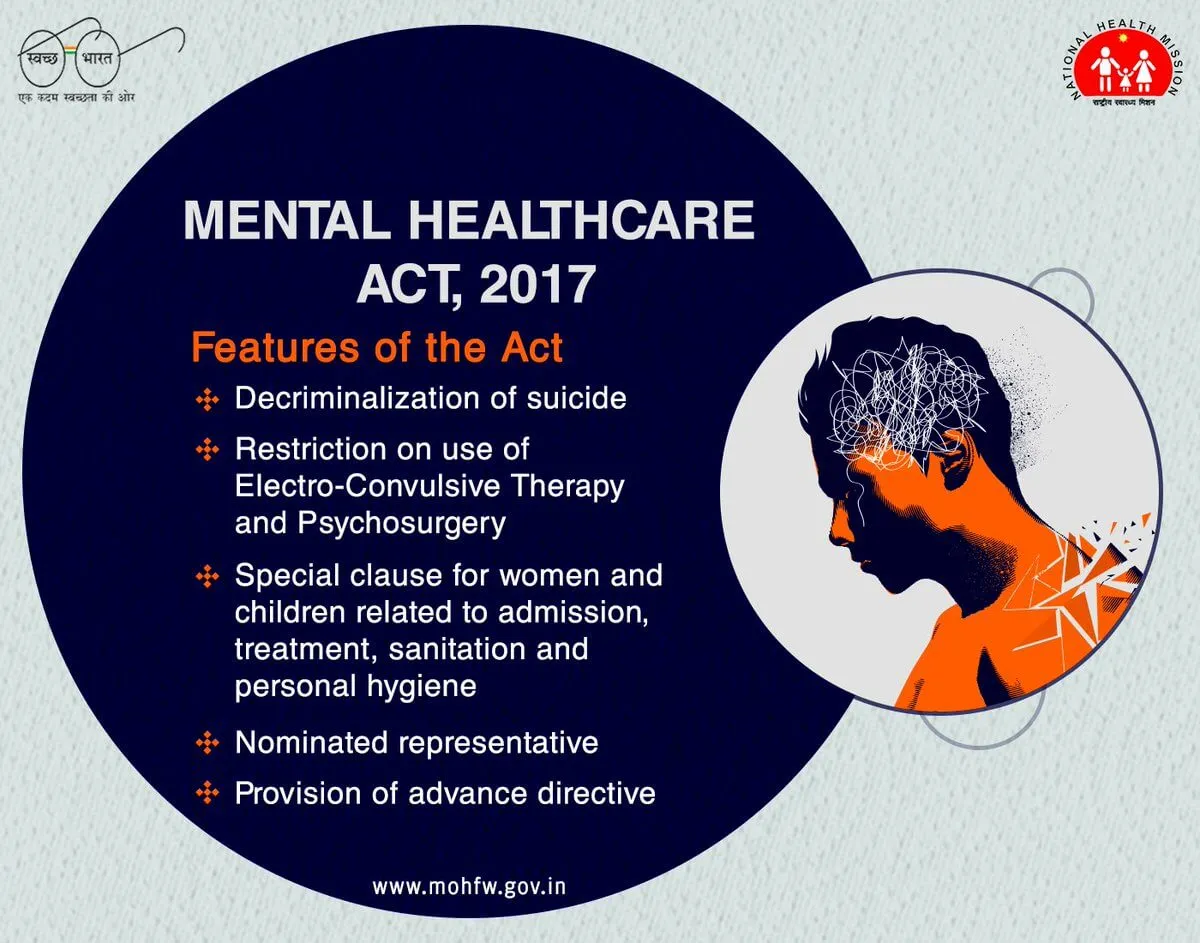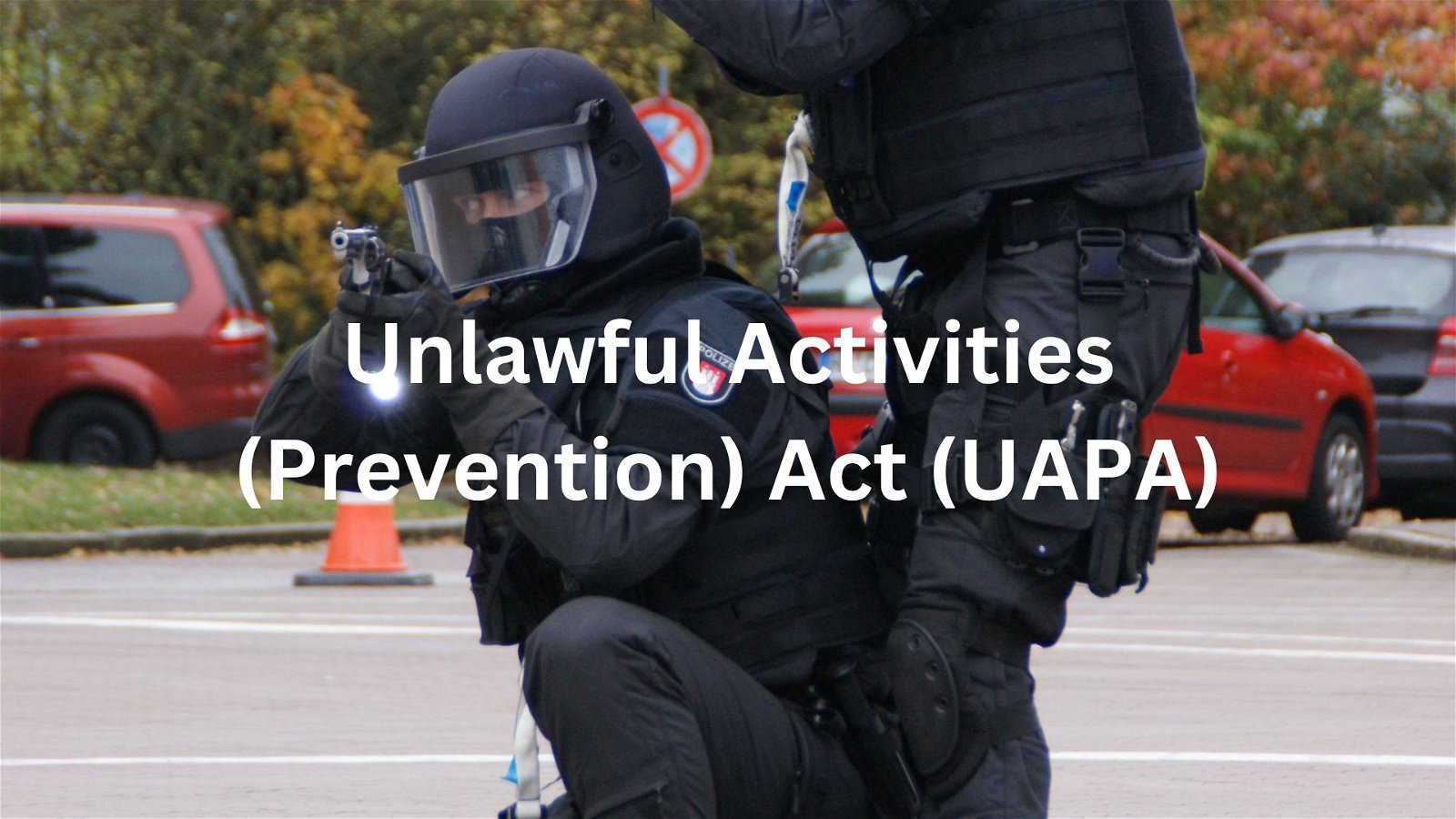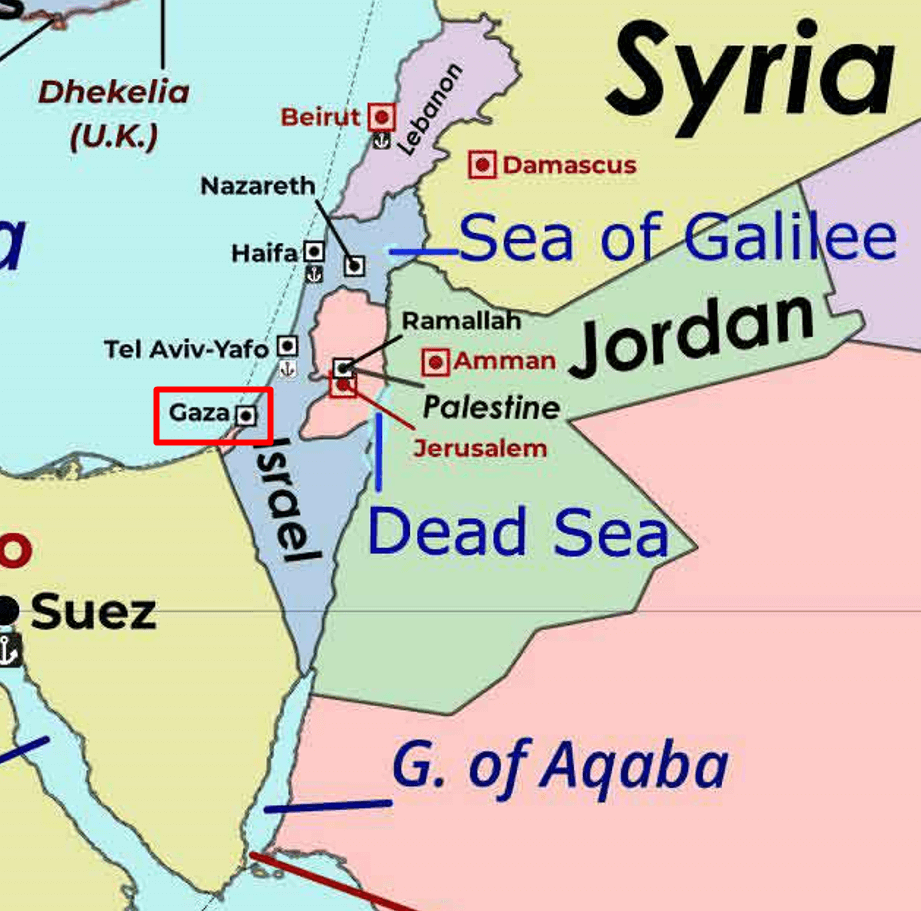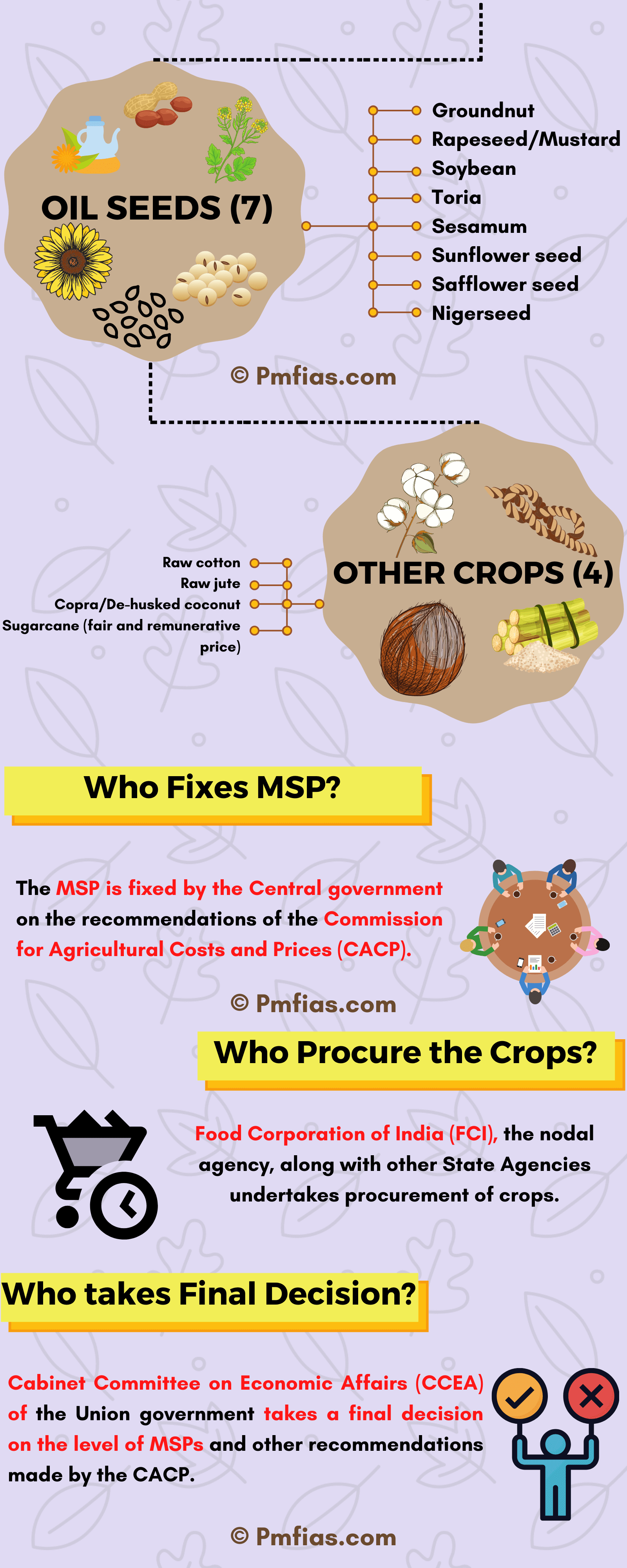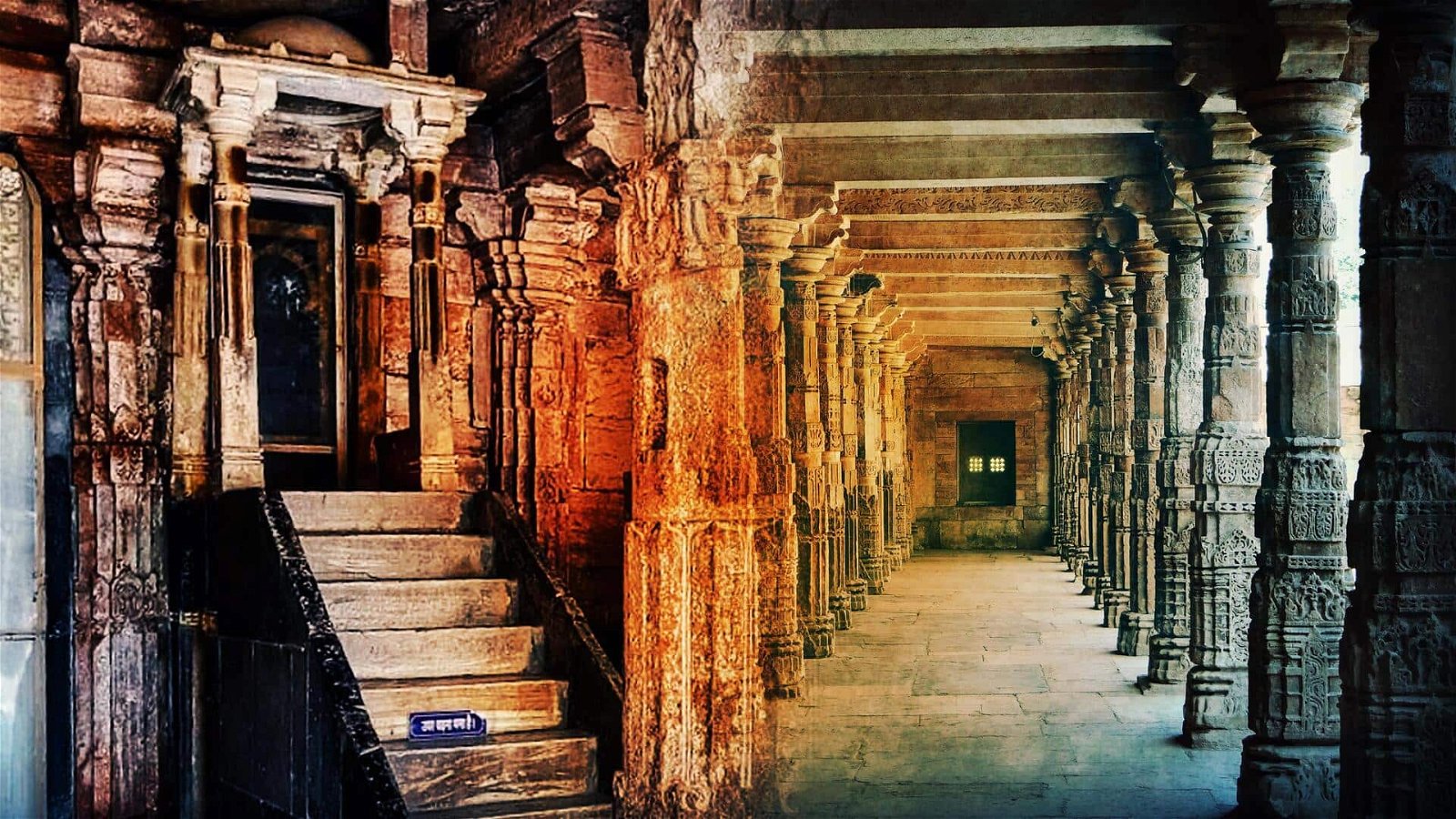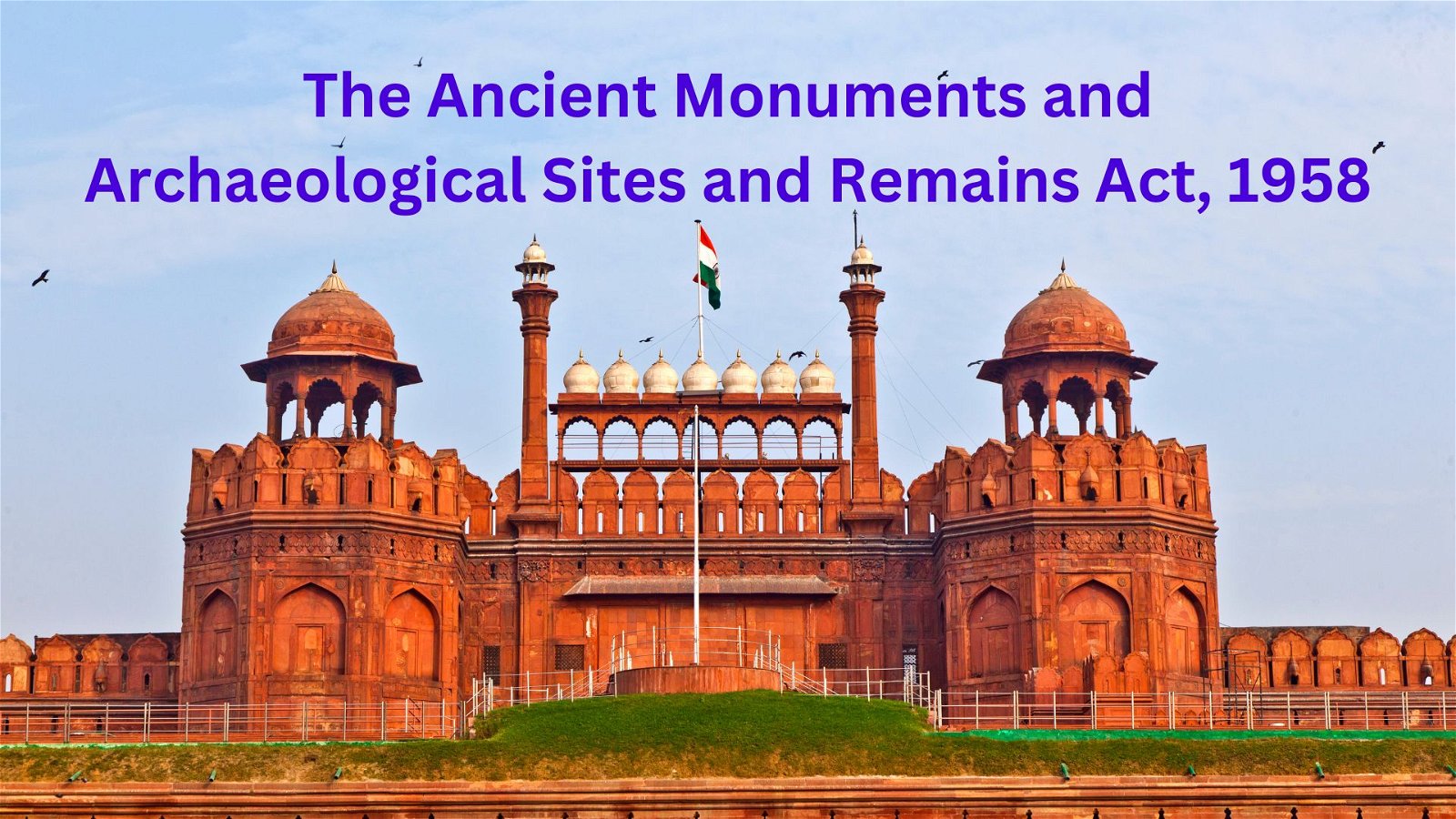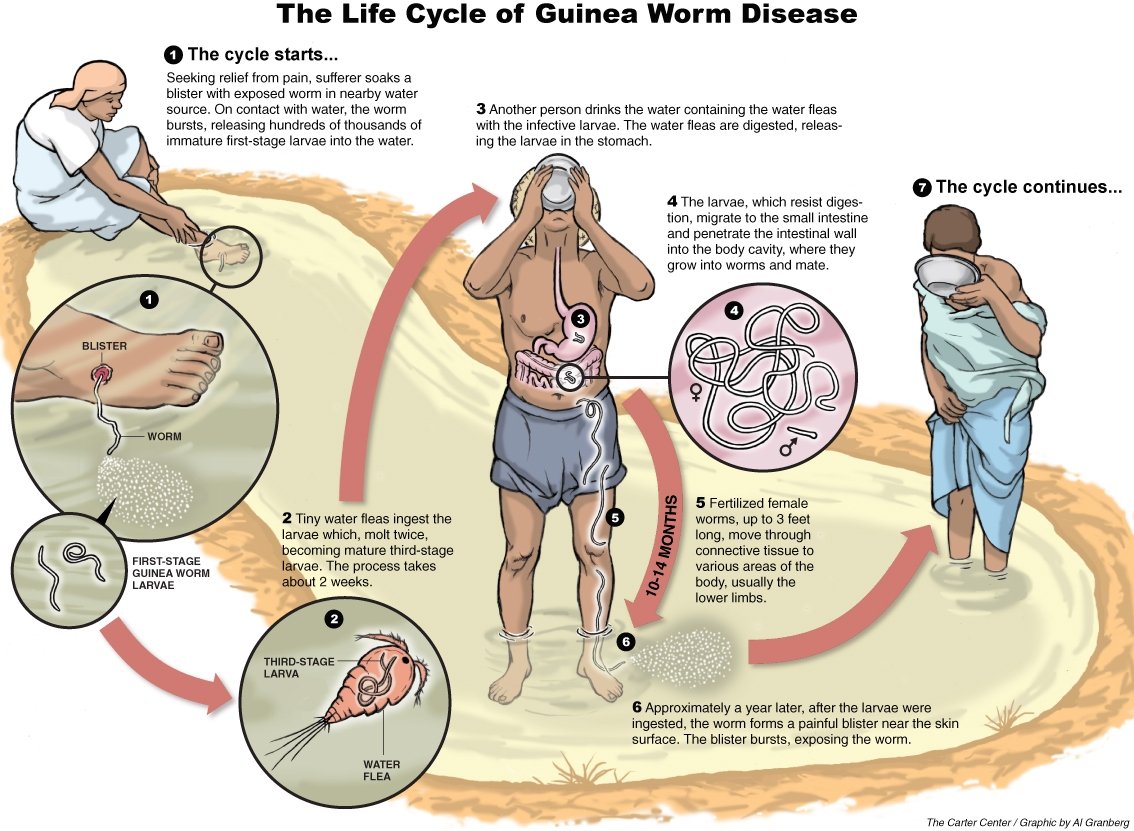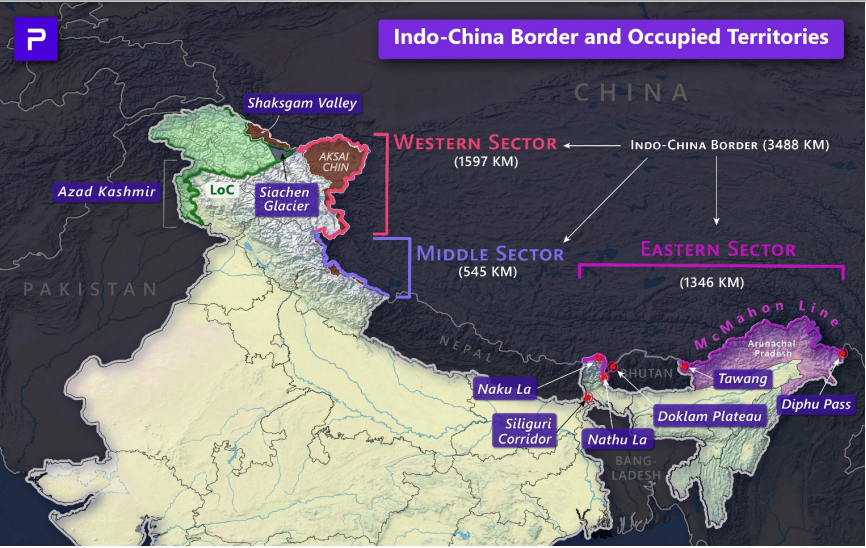
Current Affairs July 24, 2023: Private Mining of Critical Minerals, National Financial Reporting Authority, Tele-MANAS, India’s First Satellite Network Portal Site, Guam Kingfisher
Subscribers of "Current Affairs" course can Download Daily Current Affairs in PDF/DOC
Subscribe to Never Miss an Important Update! Assured Discounts on New Products!
Must Join PMF IAS Telegram Channel & PMF IAS History Telegram Channel
{GS1 – Geo – EG – Mineral Resources – 2023/07/24} Private Mining of Critical Minerals
- Context (DTE): GoI amended the Mines and Minerals (Development and Regulation) Act of 1957, allowing private players to mine six critical minerals — lithium, titanium, beryllium, zirconium, niobium, and tantalum.
- These six minerals have been removed from the country’s atomic minerals lists to allow private players to mine them.
|
Critical Minerals
- GoI has unveiled the first report of the country on “Critical Minerals for India” and has identified 30 critical minerals.
- The identification of the critical minerals is a part of multiple strategic value chains, which include:
- clean technologies initiatives (such as zero-emission vehicles, wind turbines, and solar panels);
- information and communication technologies (including semiconductors);
- advanced manufacturing inputs and materials (such as defence applications, permanent magnets, and ceramics).
- These are minerals that are essential for economic development and national security.
- The lack of availability of these minerals or the concentration of extraction or processing in a few geographical locations can lead to “supply chain vulnerabilities and even disruption of supplies”.
- A mineral is critical when the risk of supply shortage and associated economic impact is (relatively) higher than other raw materials.

Ciritical Minerals of India
- The minerals were identified based on a report by an Expert Committee of the Ministry of Mines.
- These 30 critical minerals are Antimony, Beryllium, Bismuth, Cobalt, Copper, Gallium, Germanium, Graphite, Hafnium, Indium, Lithium, Molybdenum, Niobium, Nickel, PGE, Phosphorous, Potash, REE, Rhenium, Silicon, Strontium, Tantalum, Tellurium, Tin, Titanium, Tungsten, Vanadium, Zirconium, Selenium and Cadmium.
- The committee also recommended the creation of the Centre of Excellence for Critical Minerals (CECM) under the Ministry of Mines.
- This proposed Centre will periodically update the list of critical minerals for India.


India’s import dependency
| Critical Mineral | Percentage dependency | Major Import Sources (2020) |
| Lithium | 100% | Chile, Russia, China, Ireland, Belgium |
| Cobalt | 100% | China, Belgium, Netherlands, US, Japan |
| Nickel | 100% | Sweden, China, Indonesia, Japan, Philippines |
| Vanadium | 100% | Kuwait, Germany, South Africa, Brazil, Thailand |
| Niobium | 100% | Brazil, Australia, Canada, South Africa, Indonesia |
| Germanium | 100% | China, South Africa, Australia, France, US |
| Rhenium | 100% | Russia, UK, Netherlands, South Africa, China |
| Beryllium | 100% | Russia, UK, Netherlands, South Africa, China |
| Tantalum | 100% | Australia, Indonesia, South Africa, Malaysia, US |
| Strontium | 100% | China, the US, Russia, Estonia, Slovenia |
| Zirconium(zircon) | 80% | Australia, Indonesia, South Africa, Malaysia, US |
| Graphite(natural) | 60% | China, Madagascar, Mozambique, Vietnam, Tanzania |
| Manganese | 50% | South Africa, Gabon, Australia, Brazil, China |
| Chromium | 2.5% | South Africa, Mozambique, Oman, Switzerland, Turkey |
| Silicon | <1% | China, Malaysia, Norway, Bhutan, Netherlands |
Description of the Six Critical Elements Opened for Private Mining
Lithium
- Lithium is a non-ferrous, soft, silvery-white alkali metal.
- It is also called ‘white gold’ due to its high demand for rechargeable batteries.
Properties
- Under standard conditions, it is the least dense metal and the least dense solid element.
- Like all alkali metals, it is highly reactive and flammable, so it must be stored in vacuum, inert atmosphere, or inert liquid (such as purified kerosene or mineral oil).
- It exhibits a metallic lustre. But it corrodes quickly in the air to a dull silvery grey, then black tarnish.
Occurrence
- It never occurs freely in nature but occurs mainly as pegmatitic minerals.
- Due to its solubility as an ion, it is present in ocean water and commonly obtained from brines (high-concentration salt solution in water).
- Lithium metal is isolated electrolytically from a mixture of lithium chloride and potassium chloride.
|
Global Reserves and Production
- Countries with largest reserves: 1st Bolivia > 2nd Argentina > 3rd Chile > 4th US > Australia > China.
- 54% of the world’s lithium reserves are in three South American countries: Argentina, Bolivia, and Chile. The area is referred to as the ‘Lithium Triangle’.
- Top Producers: 1st Australia > 2nd Chile > 3rd China > 4th Aregentina > 5th Zimbabwe
Uses
- Lithium-ion batteries are used in laptops, mobiles, electric vehicles, wind turbines, solar panels, etc.
- It is used to make alloys with aluminium and magnesium, which are stronger but lighter.
- It is used in nuclear reactions, the ceramics and glass industry, and lubricating greases.
- It is also used for carbon dioxide removal and air purification (esp. in confined areas, such as spacecraft and submarines).
Titanium
- Titanium is a metal that has a silver-grey appearance.
- Properties: high strength, lightweight, and is corrosion-resistant, heat resistant (due to high melting point), and biocompatible (compatible with living tissues and has low reactivity with the human body).
- Occurrence: found in nature only as an oxide, not in its pure metallic form.
- It is found in various minerals, rocks, and soils. It is also present in plants, animals, natural waters, deep-sea dredgings, meteorites, and stars.
- Ores: The most abundant titanium ore is ilmenite. Other titanium ores include rutile and titanite.
- Ilmenite: It is an iron-black, heavy, metallic oxide mineral. It is composed of iron and titanium oxide. It is commonly found in igneous rocks.
- Rutile: It has a distinctive reddish-brown colour and a higher titanium dioxide content than ilmenite. It occurs in igneous and metamorphic rocks and is often found in association with ilmenite.
- Titanite: It is a calcium titanium silicate mineral. It is green, yellowish-green, brown, or black in colour. It is commonly found in metamorphic and igneous rocks.
|
- Top Producers of Titanium: 1st China > 2nd Russia > 3rd Japan > 4th Kazakhstan > 5th Ukraine
- Uses: nuclear applications, defence, aerospace, marine, and construction industries, high-performance alloys, electrical goods, medical implants, and jewellery.
Zirconium
- Zirconium is a greyish-white metal.
- Properties: soft, malleable, lustrous, ductile, and corrosion-resistant.
- Occurrence: zircon mineral (zirconium silicate) commonly found in beach sands.
- Baddeleyite (pure zirconium dioxide) is the only other important zirconium mineral.
- Top Producers: 1st Australia > 2nd South Africa > 3rd China > 4th Ukraine > 5th Mozambique
- Uses: nuclear applications, aerospace and defence industries, production of superalloys, capacitors, medical implants, ceramics, and zircon Gemstones.
Beryllium
- Beryllium is a steel-grey metal with chemical properties resembling those of aluminium.
- Properties: light, high melting point, excellent thermal conductivity, low density and brittle.
- Occurrence: It does not occur freely in nature. It is primarily extracted from beryl and bertrandite minerals. Beryl forms gemstones, such as emeralds and aquamarine.
- Top Producers of Beryllium: 1st United States > 2nd China > 3rd Mozambique > 4th Brazil > 5th Russia.
- Uses: nuclear applications, aerospace and defence industries, production of alloys and semiconductors (due to its ability to improve the electrical performance of semiconductors).
- Beryllium is transparent to X-rays, making it an ideal material for X-ray windows.
Niobium
- Niobium is a grey metal that looks like steel or, when polished, like platinum.
- Properties: It is soft, ductile, corrosion-resistant, and superconductive (at low temperatures).
- Occurrence: It is primarily obtained from the minerals columbite-tantalite (coltan) and pyrochlore.
- Top Producers of Niobium: 1st Brazil > 2nd Canada > 3rd Rwanda > 4th Nigeria > 5th Mozambique.
- Uses: nuclear applications, alloys, electronic components, orthopaedic and dental implants, etc.
Tantalum
- Tantalum is bright, silver-grey metal.
- Properties: It is very hard and has high density, high melting point, and corrosion resistance.
- Occurrence: It is obtained from the mineral columbite-tantalite (coltan).
- Columbite-tantalite is a black-to-brownish-black mineral that contains both niobium and tantalum.
- Top Producers: 1st Democratic Republic of Congo > 2nd Brazil > 3rd Rwanda > 4th Nigeria > 5th China.
- Uses: nuclear applications, aerospace and defence industries, production of capacitors, medical implants, super alloys, etc.
Why Private Mining is Allowed for These Critical Minerals
- Critical minerals are in high demand as countries move towards green transition and e-mobility.
- Allowing private players in the mining of critical metals will bring more capital and foster the use of new and emerging technologies for exploration and mining processes.
- India currently is heavily dependent on imports of these minerals. So, the need to increase their production is on high priority.
Concerns Associate with Mining of These Critical Minerals
- Radioactivity: These six critical minerals are also atomic minerals. So the processing of these minerals may expose workers to radioactivity.
- Nuclear Waste Management: These minerals are used in nuclear applications and they are also corrosion-resistant. So the waste generated after their use in nuclear applications must be safely stored and isolated to prevent any potential environmental or health hazards.
- Environmental Impact: Mining activities of these minerals may disturb natural habitats, affect local ecosystems, and potentially contribute to soil and water pollution.
- Ethical Sourcing: In some regions, mining practices have been associated with social and human rights issues, including unethical labour practices and armed conflicts financed by the illegal trade of minerals.
- High-Temperature Processing Challenges: These minerals are high-temperature resistant. So, they require high-temperature processing which is energy-intensive and complex.
- Health Hazards: Inhaling the gases and fumes released during the mining and processing of these minerals cause different diseases. For e.g., prolonged exposure to beryllium can cause a lung disease called berylliosis.
{GS1 – MIH – Personalities – 2023/07/24} Bal Gangadhar Tilak (Lokmanya Tilak)
- Context (PIB): PM Modi has paid tributes to Lokmanya Tilak on his Jayanti.

- Tilak was born on 23rd July 1856 in Ratnagiri, Maharashtra.
- He passed away on 1st August 1920, just before the launch of the Non-Coperation Movement.
Ideology
Nationalist Revolutionary
- Tilak was a revolutionary nationalist and extremist leader.
- He preached the message of self-respect, Swadeshi, and Swarajya (self-rule).
- He stressed that there could be no progress without self-rule (swarajya).
- He publicly supported the efforts to assassinate Presidency Magistrate Douglas Kingsford in 1908.
- Mahatma Gandhi called him The Maker of Modern India, while Jawaharlal Nehru described him as The Father of the Indian Revolution (Unrest).
Devout Hindu
- Tilak was a devout Hindu who advocated for cultural and religious revival and used Hindu scriptures to inspire people to fight oppression.
- He popularised Ganesh Chaturthi and propounded the celebration of Shiv Jayanti on the birth anniversary of Chhatrapati Shivaji to propagate nationalist ideas and foster a sense of national identity.
Swadesh
- Swadeshi Wastu Pracharini Sabha was started by Tilak in 1905.
- It aimed to start certified Swadeshi shops.
Contribution Towards Education
- Tilak and others started the New English School (1880) in Pune.
- He and his associate Gopal Ganesh Agarkar founded the Deccan Education Society (1884).
- He is among the founders of Fergusson College (1885), Pune.
- The New English School and the Fergusson College functioned under the Deccan Education Society.
Books by Tilak
- The Orion, Or, Researches Into the Antiquity of the Vedas (English)
- The Arctic Home in the Vedas (English; about the origins of the Indo-Aryan people)
- Gita Rahasya (Marathi; authored in 1915 while he was in prison at Mandalay, Burma. According to him, the real message behind the Bhagavad Gita is Nishkam Karmayoga (selfless action), rather than Karma Sanyasa (renouncing of actions))
Freedom of the Press
- Tilak started two newspapers in 1881:
- Kesari (Marathi)
- The Mahratta (English)
Sedition Charges
- Tilak’s activism, appealing to Hindu symbolism and Maratha history, excited the populace and brought him into conflict with the British government.
- His articles criticising the British government’s handling of the plague epidemic in Pune inspired the Chapekar brothers to assassinate Commissioner Rand and Lt. Ayerst in 1897.
- He had been tried for sedition charges thrice by British Indian Government— in 1897, 1908 and 1916.
- He was sentenced to 18 months of imprisonment in 1897 and 6 years in 1908.
- His prosecution for sedition gained him more popularity, earning him the title Lokamanya (”Beloved Leader of the People”).
Home Rule League
- Tilak founded the All India Home Rule League in 1916 with Joseph Baptista, Annie Besant and Muhammad Ali Jinnah to reunite with his fellow nationalists and to propagate the message of Swaraj.
- It was restricted to Maharashtra (excluding Bombay City), Karnataka, Central Provinces, and Berar.
- Poona was the headquarters of his league. He held his first home rule meeting at Belgaum.
{GS2 – MoCA – 2023/07/24} National Financial Reporting Authority (NFRA)
- Context (PIB | LM): The resignation of the auditor of Think and Learn Pvt. Ltd (Byju’s) has exposed a gap in the regulatory framework for auditors.
Origins of NFRA
- NFRA is an independent regulator overseeing the auditing profession.
- The idea for an NFRA came following the Satyam scam in 2009.
- Section 132 of the Companies Act, 2013, provided for the setting up of the NFRA.
- The NFRA committee was constituted in 2018 by GOI under Sub Section (1) of Section 132.
- Composition: Chairman, three full-time members, and one secretary.
Functions and Duties
- As per Sub Section (2) of Section 132 of the Companies Act, 2013, the duties of the NFRA are to:
- Recommend to GoI the accounting and auditing standards to be adopted by companies/auditors.
- Monitor and enforce such standards and policies.
- Oversee the professions associated with the compliance of these standards and policies.
Powers of NFRA
- It can investigate the professional misconduct of any member or a firm of chartered accountants.
- It can issue summons and examine on oath.
- It can also inspect any books, registers and documents of professionals/firms probed.
- It can impose penalties and debar a firm member.
Purview
- Under the NFRA Rules, 2018, the NFRA has the power over:
- Listed companies
- Large unlisted companies
- Having paid-up capital of rupees five hundred crores or more, or
- Having an annual turnover of rupees one thousand crores or more, or
- Having aggregate outstanding loans, debentures, and deposits of five hundred crores or more.
- NFRA’s mandate also covers any company/person, if referred by GoI in the public interest.
Blindspot
- The oversight of audit regulator NFRA extends ONLY to statutory auditors of listed companies, banks, insurers, power utilities, and large unlisted public limited companies.
- It excludes private limited companies, no matter how big they are.
- This certainly makes a case for amending the NFRA Rules of 2018, which defines the public interest entities, the auditors of which come under the regulator’s ambit.

Alternate Viewpoint
- Self-regulator, the Institute of Chartered Accountants of India (ICAI), can address any governance issue relating to entities outside NFRA’s mandate.
- Large investors in private limited companies are financially well-informed. NFRA must focus its resources on companies where the public interest is involved.
- Startups are expected to innovate, and a greater regulatory burden is not in their interest.
Serious Fraud Investigation Office (SFIO)
|
{GS2 – MoHFW – 2023/07/24} Mental Health: Tele-MANAS
- Context (TH I PIB): Tele-MANAS receives 2,00,000 calls since its launch in 2022.
- The Union Ministry of Health and Family Welfare launched the Tele Mental Health Assistance and Networking Across States (Tele-MANAS) under National Tele Mental Health Programme in 2022.
- The Tele Mental Health Programme aims to nationally strengthen mental health service delivery.
- The Tele-MANAS is organised as a two-tier system:
- Tier 1: State Tele-MANAS cells with trained mental health specialists for teleconsultation through a customised Interactive Voice Response system (IVRS),
- Tier 2: District Mental Health Programme (DMHP)/Medical College resources for physical consultation and/or eSanjeevani for audio-visual consultation.


- Tele-MANAS will integrate various mental health services and professionals, including the National teleconsultation service, e-Sanjeevani, Ayushman Bharat Digital Mission, etc.
- Sadness, sleeplessness, stress and anxiety are the top mental health concerns shared on Tele MANAS.
- Features of Tele-MANAS:
- It is a free service (Toll-free number 14416).
- It is available 24/7 in 20 languages with over 1,900 trained counsellors.
- It can link to appropriate services and nearby healthcare facilities.
eSanjeevani
Mental Health
Causes Of Mental Health Issues
Mental Healthcare Act, 2017
Mental Health Review Commission and Board
Decriminalising suicide
Prohibiting electro-convulsive therapy
Penalties and offences
|
{GS2 – MoJS – 2023/07/24} Jal Jeevan Mission (JJM)
- Context (PIB): An MoU was signed between the Department of Drinking Water and Sanitation and Echo India (NGO) to establish JJM Digital Academy.
- JJM Digital Academy aims to build the capacity of various stakeholders associated with water supply programmes like administrators, Panchayat functionaries, sanitation workers, etc.

Jal Jeevan Mission – Rural (JJM Rural)
- JJM Rural is a centrally sponsored scheme announced by the Prime Minister in 2019.
- It works under the Department of Drinking Water and Sanitation, Ministry of Jal Shakti (MoJS).
- It aims to provide safe and adequate drinking water through individual functional household tap connections (FHTC) by 2024 to all households in rural India.
- It envisages the supply of 55 litres of water per person per day to every rural household.
- JJM will also implement source sustainability measures as mandatory elements, such as recharge and reuse through grey water management (used wastewater that has not come into contact with faeces), water conservation, rainwater harvesting, etc.
- JJM will be based on a community approach to water (Jan Andolan for water — making water everyone’s priority) and will include extensive Information, education, and communication.
- The Mission will converge with other Central and State Government Schemes to achieve its objectives
of sustainable water supply management across the country.
- The fund-sharing pattern between the Centre and states is:
- 100% for Union Territories.
- 90:10 for Himalayan and North-EasternStates,
- 50:50 for other states.
- A dedicated fund called Rashtriya Jal Jeevan Kosh was set up for the mission.
Jal Jeevan Mission – Urban (JJM Urban)
Objectives
|
{GS3 – S&T – IT – 2023/07/24} India’s First Satellite Network Portal Site
- Context (AIR | IE | ET): Gujarat government signed an MoU with OneWeb India Communications Pvt Ltd for setting up India’s First Satellite Network Portal Site at Mehsana in Gujarat.
Satellite Broadband Technology
- Satellite broadband technology utilises communication satellites to provide high-speed internet access.
- It can provide internet connectivity to users in remote or rural areas where traditional terrestrial broadband infrastructure is limited or unavailable.


Key features of satellite broadband technology
- A constellation of communication satellites orbiting the Earth: These satellites relay internet data between the user’s satellite dish (terminal) and ground stations.
- Two-Way Communication:
- Data is transmitted from the user’s satellite dish to the satellite (uplink), and
- Data is received from the satellite back to the user’s dish (downlink).
- Geostationary satellite constellations: remain fixed relative to the Earth’s surface, providing continuous coverage to specific geographic areas.
- Non-geostationary satellite constellations: involve non-geostationary satellites, especially Low Earth Orbit (LEO) satellites that revolve around the earth at low Earth orbits (LEO).
Advantage of non-geostationary satellites over geostationary satellites
|
Satellite Network Portal (SNP) Site
- Satellite network portal (SNP) site serves as a data downlink and uplink terminal or base station on the ground, an intermediary for data transmission through satellite tracking antenna systems.
- The portal enables tracking the position and monitoring the health of the satellites in real-time.
- Based on the data received, SNP sends commands to the satellites to adjust their orbits.
OneWeb Satellite Constellation
- OneWeb satellite constellation is a planned network of 648 Low-earth Orbit (LEO) satellites.
- It is the brainchild of London-based satellite communications satellite company OneWeb.
- It aims to deliver global broadband internet service with high data throughput, low latency, and true global coverage.
- Satellites are arranged in 12 rings (Orbital planes), with 49 satellites in each plane.
- The orbital planes are 1200 km above the Earth and are inclined to be near polar (87.9°)
- Each satellite completes an entire trip around the Earth every 109 minutes.
|


Impact of Russia-Ukraine Crisis on OneWeb Satellite Constellation
- Prior to February 2022, all OneWeb’s satellites were launched onboard the Russian Soyuz rocket.
- After Russia invaded Ukraine in February 2022, sanctions were imposed on Russia, which impacted OneWeb’s supply chain, and indirectly, on its constellation service.
OneWeb-NewSpace India Limited (NSIL) Partnership.
- OneWeb entered into a partnership with the NewSpace India Limited (NSIL) for launching OneWeb’s Low-earth Orbit (LEO) satellites on board ISRO’s LVM3.
- This partnership comes with the commitment that OneWeb will provide connectivity across the length and breadth of India by 2023, including the hardest-to-reach areas across the country.
- India’s Bharti Enterprises, which owns Bharti Airtel, is a major investor and shareholder in OneWeb.
LVM3 M2/OneWeb India-1 Mission
- LVM3-M2 mission is a commercial mission for a foreign customer OneWeb, through NSIL.
- Salient features of the mission are:
- First Multi-Satellite mission with 36 OneWeb Satellites onboard
- First Commercial Mission of LVM3
- First NSIL Mission with LVM3
- First launch of LVM3 to LEO
- First Indian Rocket with a six-ton payload
LVM3 M3/OneWeb India-2 Mission
- This mission marked OneWeb’s second satellite deployment by NSIL.
- It is the second commercial mission of LVM3.
- It was OneWeb’s 18th launch bringing the total of OneWeb’s constellation to 618 satellites.
Launch Vehicle Mark-3 (LVM3)
New Space India Ltd (NSIL)
|
||||||||||||||||||||||||||||
{Prelims – Bio – Diseases – 2023/07/24} Crimean-Congo haemorrhagic fever (CCHF)
- Context (IE): A person succumbed to Crimean-Congo haemorrhagic fever (CCHF) in Gujarat.
- CCHF is a viral haemorrhagic fever usually transmitted by ticks.
- CCHF was first detected among soldiers in the Crimean Peninsula (near the Black Sea) in 1944.
- In 1969, it was found that the same pathogen caused an ailment identified in the Congo Basin. Thus, the disease was named the Crimean-Congo haemorrhagic fever.
- Animals such as cattle, goats, sheep and hares serve as amplifying hosts for the CCHF virus.
- Transmission to humans occurs through contact with infected ticks or animal blood.
- There is no vaccine for the virus in either humans or animals.
- Treatment generally consists of managing symptoms.
- It is challenging to prevent and treat and has a high case fatality ratio (10–40%).
{Prelims – Envi – Invasive Species – 2023/07/24} Ludwigia Peruviana

- Context (WION | TH): Ludwigia Peruviana (Peruvian water primrose), an aquatic weed native to Central and South America, is threatening elephant habitats in Annamalai Tiger Reserve.
- It was probably introduced as an ornamental plant for its tiny yellow flowers.
- It grows fast along water bodies and has infested the majority of the region’s swamps, locally known as vayals, where elephants, gaurs and other herbivores used to find edible grass.
- Challenges in removal:
- There is little scope to use machinery because it may further destroy the ecosystem.
- The soft plant easily breaks and spreads from roots or broken stems.
Annamalai (Indira Gandhi) National Park, Tiger Reserve, Wildlife Sanctuary
|
{Prelims – Envi – Species – 2023/07/24} Guam Kingfisher
- Context (TG): The Guam kingfishers, saved from extinction, will be introduced to the wild.
- They were almost wiped out due to the accidental introduction of brown tree snakes to the Pacific island of Guam at the end of WWII.
- However, the Guam Kingfisher will not be reintroduced to Guam. They will be introduced to a new wilderness home on Palmyra Atoll (almost 6,000km from Guam).
Guam Kingfisher (Todiramphus cinnamominus)
- Distribution: Restricted to captive breeding.
- Habitat: Tropical forests of Gaum.
- Threats: Predation by brown tree snakes and feral cats.
- Conservation Status: IUCN Red List: Extinct in the Wild
Guam
- Guam is an organized, unincorporated territory of the United States in the western Pacific Ocean.
- It is the westernmost point and territory of the United States.
- It is the largest of the Mariana Islands.
- It is the largest island in Micronesia, a sub-region of Oceania.
- Chamorro are the indigenous people of the island.

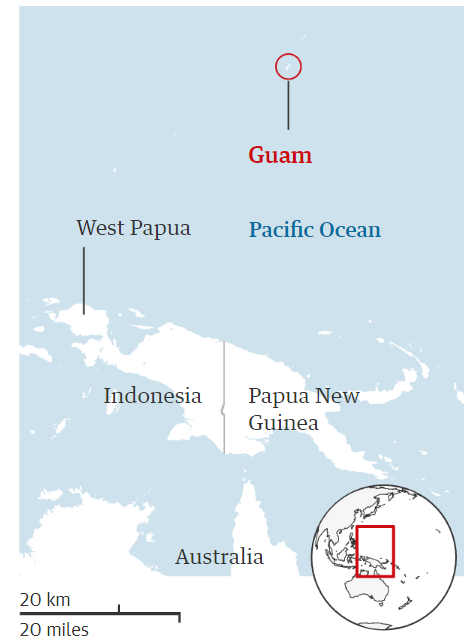





![PMF IAS Environment for UPSC 2022-23 [paperback] PMF IAS [Nov 30, 2021]…](https://pmfias.b-cdn.net/wp-content/uploads/2024/04/pmfiasenvironmentforupsc2022-23paperbackpmfiasnov302021.jpg)

